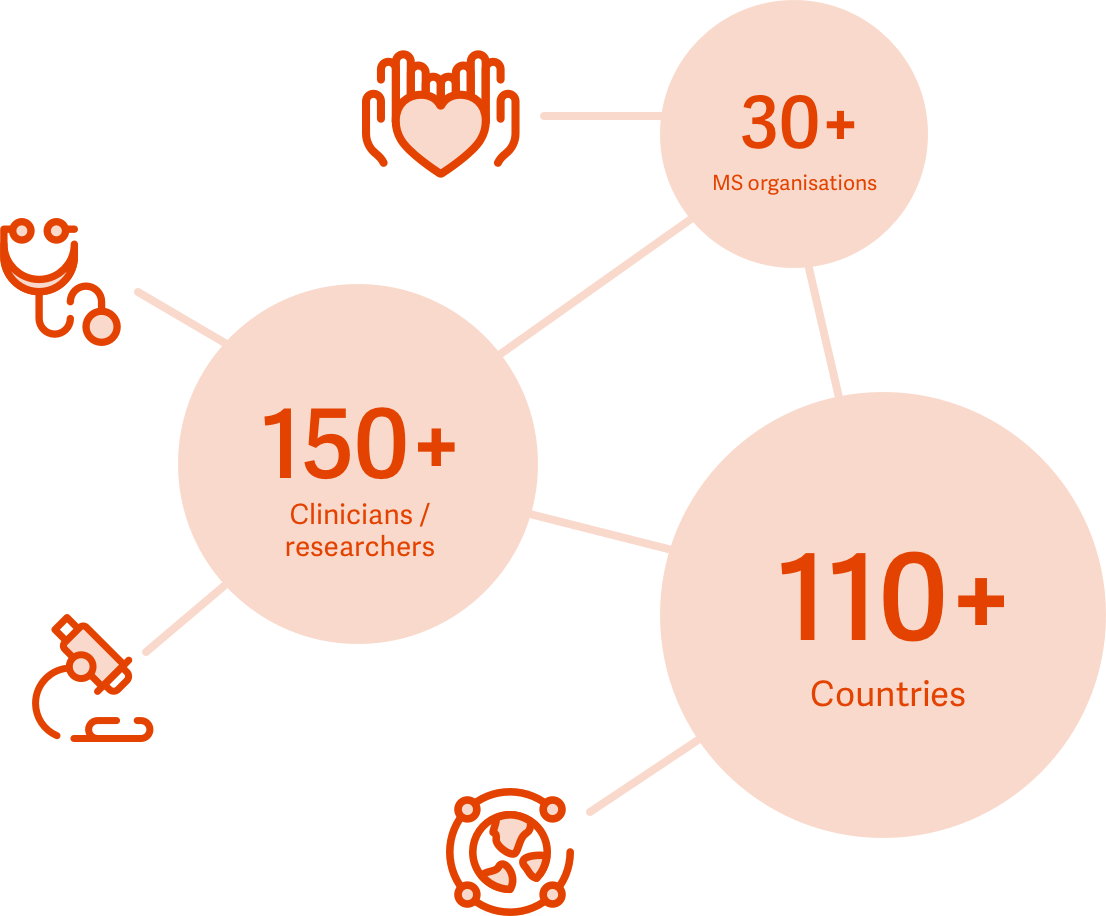What is the Atlas of MS?
The Atlas of MS is the most comprehensive worldwide study of the epidemiology of MS and the global availability and accessibility of resources for people with MS.
| Country of Interest:
|
||||
| % of people treated with each DMT | % using each DMT in country of interest? | World Bank category Upper middle income | WHO region Americas | Global results |
|---|---|---|---|---|
| Of the people with MS on DMTS, the proportion using each DMT | ||||
| Alemtuzumab | Used - but unsure of % | 1% | 1% | 1% |
| Azathioprine | Used - but unsure of % | 1% | 0% | 1% |
| Cladribine (subcutaneous or IV) | Not used | 0% | 0% | 0% |
| Cladribine (oral) | Used - but unsure of % | 3% | 1% | 2% |
| Cyclophosphamide | Used - but unsure of % | 0% | 0% | 0% |
| Dimethyl fumarate | Used - but unsure of % | 6% | 16% | 19% |
| Diroximel fumarate | not used | 0% | 0% | 0% |
| Fingolimod | Used - but unsure of % | 23% | 21% | 13% |
| Fludarabine | not used | 0% | 0% | 0% |
| Glatiramer acetate | Used - but unsure of % | 7% | 19% | 10% |
| Interferon-beta 1a | Used - but unsure of % | 10% | 8% | 11% |
| Interferon-beta 1b | Used - but unsure of % | 6% | 6% | 6% |
| IV Immunoglobulin (IVIG) | not used | 0% | 0% | 0% |
| Leflunomide | not used | 2% | 0% | 0% |
| Methotrexate | Used - but unsure of % | 0% | 0% | 0% |
| Minocycline | not used | 0% | 0% | 0% |
| Mitoxantrone | Used - but unsure of % | 0% | 0% | 0% |
| Monomethyl fumarate | not used | 0% | 0% | 0% |
| Mycophenolate mofetil | Used - but unsure of % | 1% | 0% | 1% |
| Natalizumab | Used - but unsure of % | 4% | 6% | 7% |
| Ocrelizumab | Used - but unsure of % | 8% | 2% | 8% |
| Ofatumumab | Used - but unsure of % | 0% | 0% | 0% |
| Ozanimod | not used | 0% | 0% | 0% |
| Peginterferon-beta 1a | not used | 2% | 0% | 3% |
| Ponesimod | not used | 0% | 0% | 0% |
| Rituximab | Used - but unsure of % | 5% | 1% | 5% |
| Siponimod | Used - but unsure of % | 7% | 0% | 1% |
| Teriflunomide | Used - but unsure of % | 15% | 15% | 10% |
Please note percentages are rounded to the nearest whole number. This means that DMTs with less than 0.5% use will show as 0% in our data,. Only 57 countries were able to provide estimates for this question and the data is highly variable within World Bank categories and WHO regions, with many outliers.
The Atlas of MS is the most comprehensive worldwide study of the epidemiology of MS and the global availability and accessibility of resources for people with MS.
The data shows that the number of people with MS across the globe has increased from 2.3 million in 2013 to 2.8 million in 2020 and 2.9 in 2023. It highlights the many barriers and inequalities that people with MS face in accessing diagnosis, treatment and care. Download the reports to see the full findings and recommendations or download the full dataset if you would like to conduct your own analysis comparing multiple countries.
The information in the Atlas of MS can be a powerful advocacy tool, shining a spotlight on MS and raising awareness of the lack of adequate resources available to diagnose, inform, treat, rehabilitate and support people with MS worldwide.
The Atlas of MS relies on data supplied by MS organisations from around the world. We are most grateful to the country coordinators and their colleagues for taking the time and effort to gather the information and data.

This 3rd edition of the Atlas of MS shines a spotlight on the barriers to accessing diagnosis and disease modifying therapies around the world. These issues are particularly evident in low and middle income countries but high income countries are not exempt. This report highlights the need for major policy changes to ensure early diagnosis and improved access to a range of treatments, to guarantee the best possible outcomes for people with MS. Information from the Atlas of MS should be used to guide policy-makers, health planners and specialists, in order to close the gaps in care, decrease inequities globally and provide a better future for people with MS and their families.
Professor Mai Sharawy
Professor of Neuro-Ophthalmology at Cairo University – Egypt.
Founder of MS Care and Chair of MSIF Board